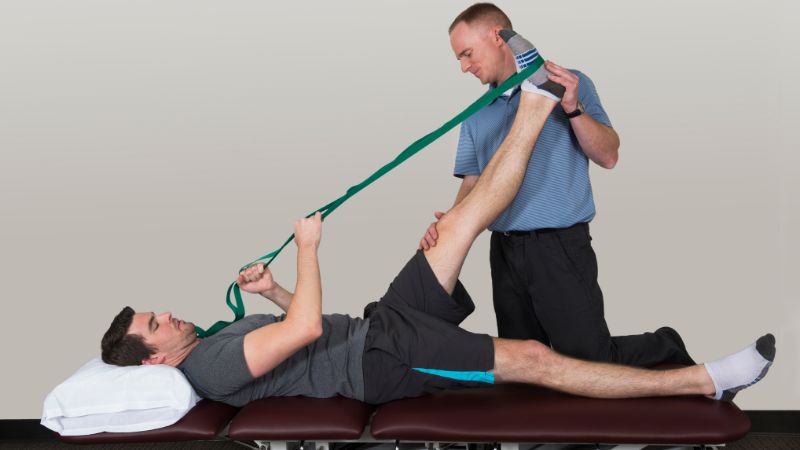Discover the transformative benefits of pelvic floor physical therapy, a specialized approach to addressing pelvic health issues. Pelvic floor dysfunction can affect both men and women, leading to problems like urinary incontinence, pelvic pain, and discomfort during sexual activity. Pelvic floor physical therapy employs focused exercises, manual therapy, and biofeedback approaches to strengthen and rehabilitate the pelvic floor muscles. This therapy not only alleviates symptoms but also improves pelvic muscle function and overall quality of life. Whether you’re recovering from childbirth, dealing with pelvic organ prolapse, or managing symptoms of overactive bladder, pelvic floor physical therapy offers personalized care to restore pelvic health effectively.
Benefits of Pelvic Floor Physical Therapy
1. Improved Bladder Control

Pelvic floor physical therapy is highly effective in improving bladder control for individuals experiencing urinary incontinence. This condition can be caused by weak pelvic floor muscles, often exacerbated by factors such as childbirth, aging, or surgery. Physical therapists specialized in pelvic floor rehabilitation design personalized treatment plans that include pelvic floor muscle exercises (Kegel exercises), biofeedback training, and bladder training techniques. These interventions help strengthen the pelvic floor muscles, enhance muscle coordination, and improve the ability to control urination. As a result, many patients experience a reduction in urinary leakage and an improvement in overall bladder function, allowing them to regain confidence and quality of life.
Read Also- 9 Benefits of physical therapy for postural restoration
2. Relief from Pelvic Pain
Pelvic floor physical therapy is instrumental in providing relief from various types of pelvic pain, including pelvic floor muscle spasms, vulvodynia, and pain associated with conditions like endometriosis or interstitial cystitis. Therapists utilize manual therapy techniques, stretching exercises, and relaxation techniques to release tension in the pelvic floor muscles and surrounding tissues. By addressing muscular imbalances and improving blood flow to the pelvic region, physical therapy helps alleviate chronic pelvic pain. Patients often report significant reduction in pain intensity and frequency, leading to improved comfort during daily activities and sexual intercourse.
3. Enhanced Sexual Function
For individuals experiencing sexual dysfunction related to pelvic floor issues, such as pain during intercourse or difficulty achieving orgasm, pelvic floor physical therapy can be transformative. Therapists work with patients to improve pelvic floor muscle tone and flexibility, which can enhance sexual arousal, sensation, and orgasm intensity. Through targeted exercises and techniques to improve pelvic floor muscle coordination and relaxation, physical therapy helps individuals regain confidence and enjoyment in their sexual relationships. Addressing underlying pelvic floor dysfunction can lead to improved sexual function and satisfaction, benefiting both individuals and their partners.
4. Treatment of Pelvic Organ Prolapse
Pelvic organ prolapse occurs when pelvic organs such as the bladder, uterus, or rectum descend into the vaginal space due to weakened pelvic floor muscles and ligaments. Pelvic floor physical therapy offers non-surgical treatment options to manage pelvic organ prolapse by strengthening the supportive muscles of the pelvic floor. Therapists educate patients on proper pelvic floor activation techniques and prescribe exercises to improve pelvic floor muscle strength and support. By enhancing pelvic floor integrity, physical therapy can help reduce the symptoms of prolapse, such as pelvic pressure or bulging, and improve overall pelvic organ support.
5. Preparation and Recovery from Childbirth

Pelvic floor physical therapy plays a crucial role in preparing women for childbirth and aiding in postpartum recovery. During pregnancy, therapists teach pelvic floor exercises and techniques to maintain pelvic floor health, prevent urinary incontinence, and support the pelvic organs as the uterus grows. After childbirth, physical therapy focuses on rehabilitating the pelvic floor muscles that may have been stretched or weakened during labor. Strengthening these muscles helps improve bladder control, reduce pelvic pain, and promote faster recovery of pelvic floor function, allowing new mothers to return to their daily activities with greater comfort and confidence.
6. Management of Chronic Pelvic Pain Syndromes
Chronic pelvic pain syndromes, such as pelvic floor dysfunction, pudendal neuralgia, or myofascial pelvic pain, can significantly impact quality of life. Pelvic floor physical therapy offers targeted interventions to address these complex pain conditions. Therapists use a combination of manual therapy, therapeutic exercises, and relaxation techniques to reduce muscle tension, improve pelvic floor muscle coordination, and alleviate pain triggers. By addressing the underlying causes of pelvic pain, physical therapy aims to improve mobility, reduce pain intensity, and enhance overall function, empowering individuals to manage their symptoms more effectively.
7. Support for Men’s Pelvic Health
While pelvic floor issues are commonly associated with women, men can also benefit from pelvic floor physical therapy. Conditions such as chronic prostatitis/chronic pelvic pain syndrome (CP/CPPS), erectile dysfunction, and post-prostatectomy urinary incontinence can be effectively managed with pelvic floor rehabilitation. Therapists work with men to strengthen pelvic floor muscles, improve bladder control, and address pain or discomfort in the pelvic region. Through tailored exercises and techniques to enhance pelvic floor muscle function, physical therapy helps men regain urinary control, alleviate pelvic pain, and improve sexual function, promoting better overall quality of life.
8. Educational and Preventive Benefits

Beyond treating existing pelvic floor issues, physical therapy provides valuable education on pelvic floor anatomy, function, and proper pelvic health practices. Therapists educate patients on lifestyle modifications, such as improving posture, managing constipation, and adopting bladder-friendly habits, to prevent the recurrence of pelvic floor dysfunction. By promoting awareness and self-care strategies, physical therapy empowers individuals to take an active role in maintaining their pelvic health long-term. Early intervention with pelvic floor physical therapy can also prevent the progression of mild pelvic floor dysfunction into more severe conditions, promoting overall pelvic wellness and quality of life.
Conclusion
In conclusion, pelvic floor physical therapy offers significant relief and improvement for individuals dealing with pelvic health issues. By addressing muscle dysfunction and improving pelvic floor strength, this therapy enhances bladder control, reduces pelvic pain, and enhances sexual function. The personalized approach of pelvic floor physical therapy ensures that each patient receives tailored care to meet their specific needs and goals. Whether you’re seeking relief from incontinence, recovering from childbirth, or managing pelvic pain, investing in pelvic floor physical therapy can lead to long-lasting improvements in your pelvic health and overall quality of life. Take the first step towards better pelvic health today with the guidance of a skilled physical therapist.
FAQs
Who can benefit from pelvic floor physical therapy?
Pelvic floor physical therapy is beneficial for individuals experiencing a wide range of pelvic health issues, including urinary incontinence, pelvic pain, pelvic organ prolapse, and pain during sexual intercourse.
How long does it take to see results from pelvic floor physical therapy?
The timeline for seeing results from pelvic floor physical therapy varies depending on the individual’s condition and adherence to the treatment plan. Some patients may experience improvement in symptoms within a few weeks, while others may require several months of consistent therapy sessions.





